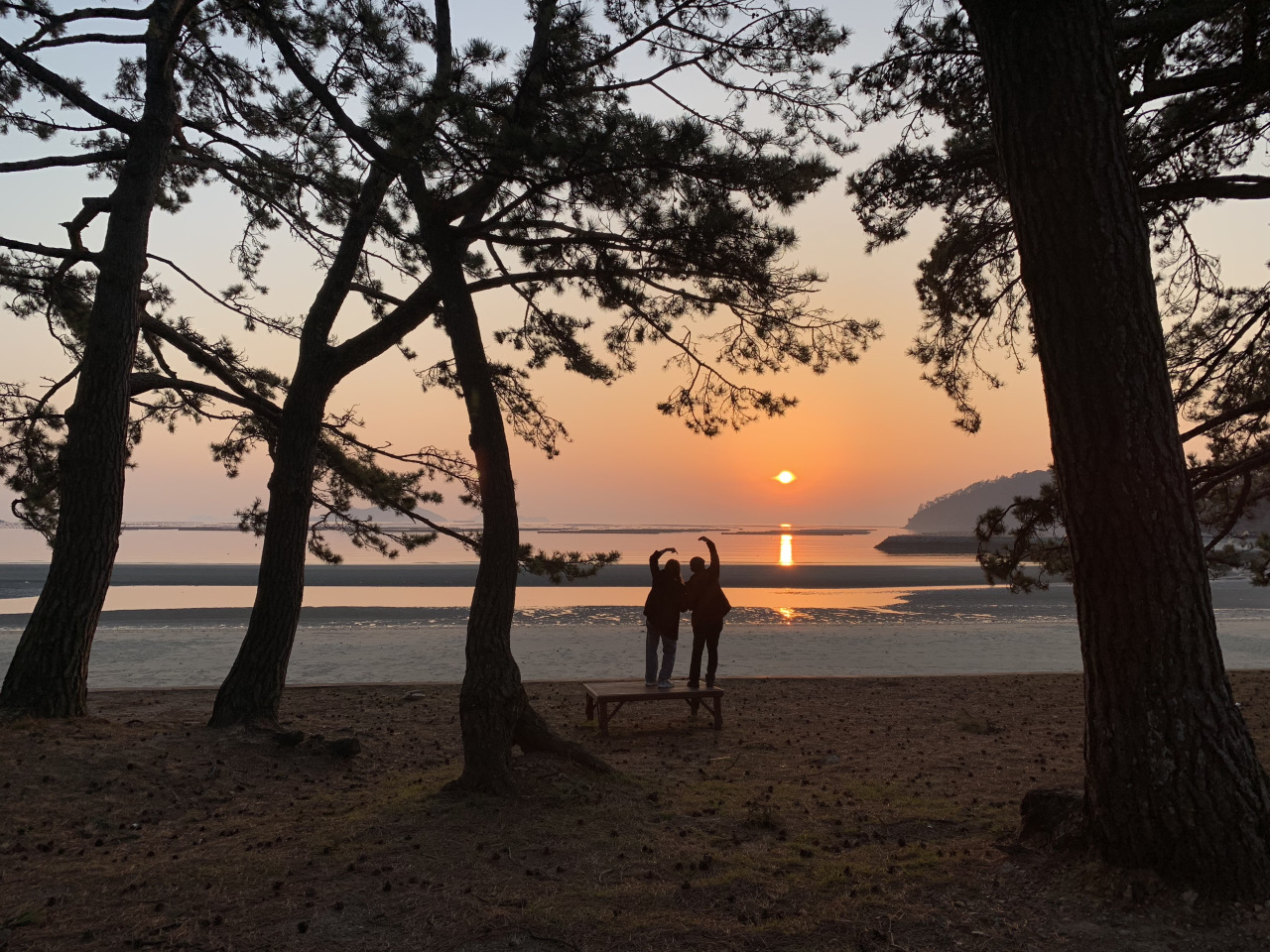
The sun goes down at Songhori Beach, one of many sunset viewpoints in Haenam. (By Im Eun-byel / The Korea Herald)
HAENAM, South Jeolla Province -- Most Koreans have heard of Haenam county’s Ttangkkeut (end of land) Village, the southernmost end of the Korean Peninsula. Many visit the village on Dec. 31 to watch the last sunset or first sunrise of the year.
But there is more to Haenam than that yearly ritual. It offers beautiful mountain landscapes and delicacies of Jeolla Province, making the more than four-hour drive from Seoul worthwhile.
Plain yet sacred Buddhism beauty
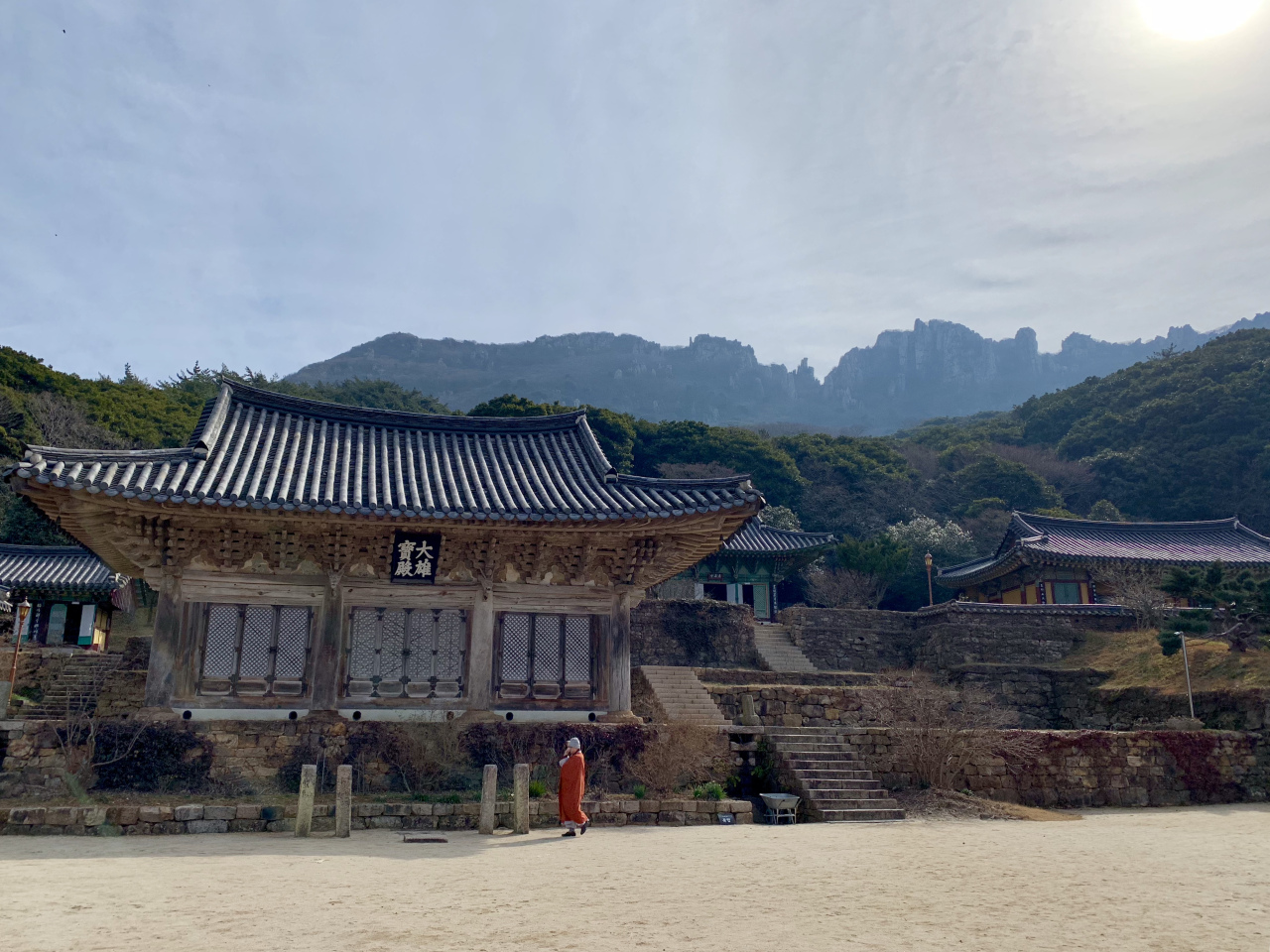
Mihwangsa (By Im Eun-byel / The Korea Herald)
Mihwangsa is hidden in the rocky mountain ridges of Dalmasan. Founded in 749 during the Shilla Dynasty, the more than 1,300-year-old temple is surrounded by a lush green forest.
It is part of Dalmagodo, a hiking trail that surrounds the mountain. As the trail is not steep, it is suitable for beginners who want to enjoy nature. Machines were not involved in construction of the trail -- only shovels and pickaxes were used.
Unlike most Buddhist temples here, Mihwangsa’s roof does not have dancheong, colorful Buddhism decorations.
At first sight, Mihwangsa may seem rather plain, but upon closer observation, the monochrome roof appears serene and beautiful. According to a local guide, it takes more efforts to maintain a roof without dancheong as such decorations are insect repellent. The uncolored wooden roof reveals its age through a wave of patterned creases.
Temple stays are available for locals and tourists who want to experience Buddhist life. The eight-day program costs 500,000 won and the three-day program 150,000 won.
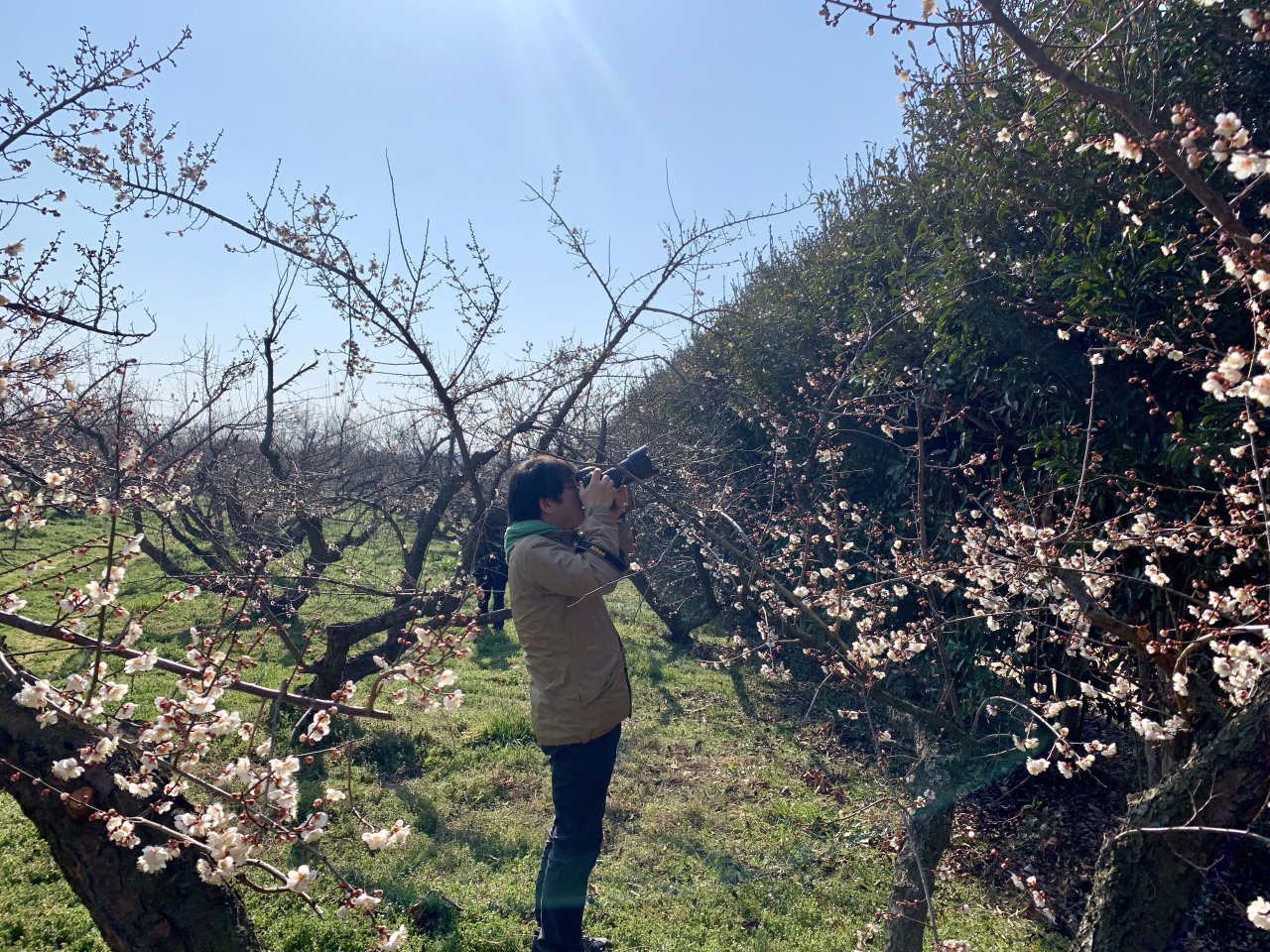
Apricot flowers will be in full bloom in March at Bohae Plum Farm.(By Im Eun-byel / The Korea Herald)
Haenam is known for two beautiful varieties of flowers -- maehwa, or apricot flowers, and camellias.
Bohae Plum Farm, the largest green plum farm in Korea, is home to beds of maehwa in March, when apricot flowers are in full bloom. The flowers appear like white curtains draped all over the farm.
The farm usually opens to the public, allowing families to enjoy picnics on its grounds. It also hosts the Bohae Maesil Festival every March. However, this year, due to the COVID-19 outbreak, the farm will close its doors to the public.
Apart from maehwa, the farm is also surrounded by camellia trees, which form a tunnel, creating a picturesque scene.
Camellias are in full bloom in February. The winter flower only inhabits southern regions, including Yeosu, South Jeolla Province, and Jeju Island. The contrast of scarlet red petals and dark green leaves is striking.
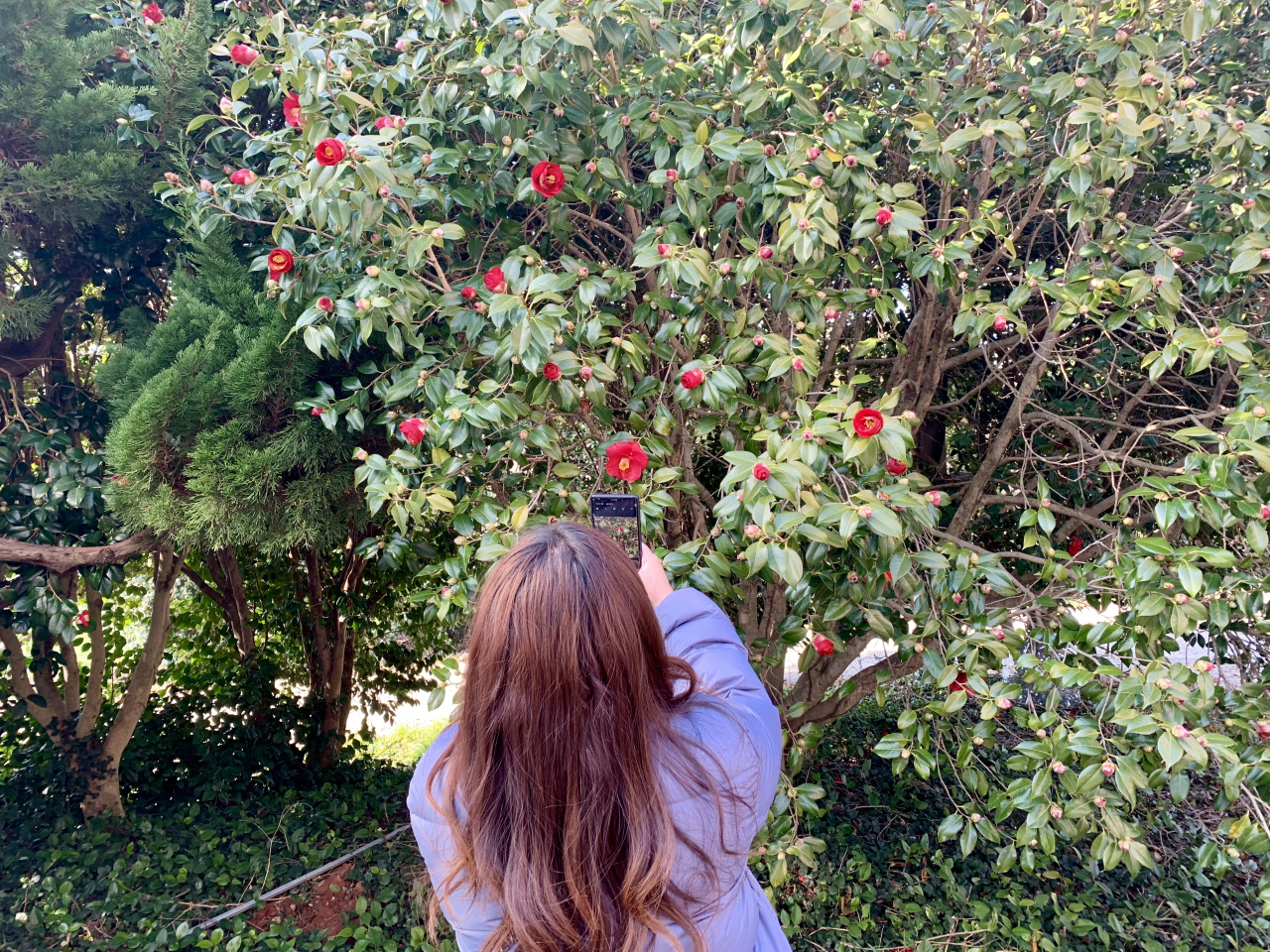
Camellias are in full bloom near Bohae Plum Farm in mid-February. (By Im Eun-byel / The Korea Herald)
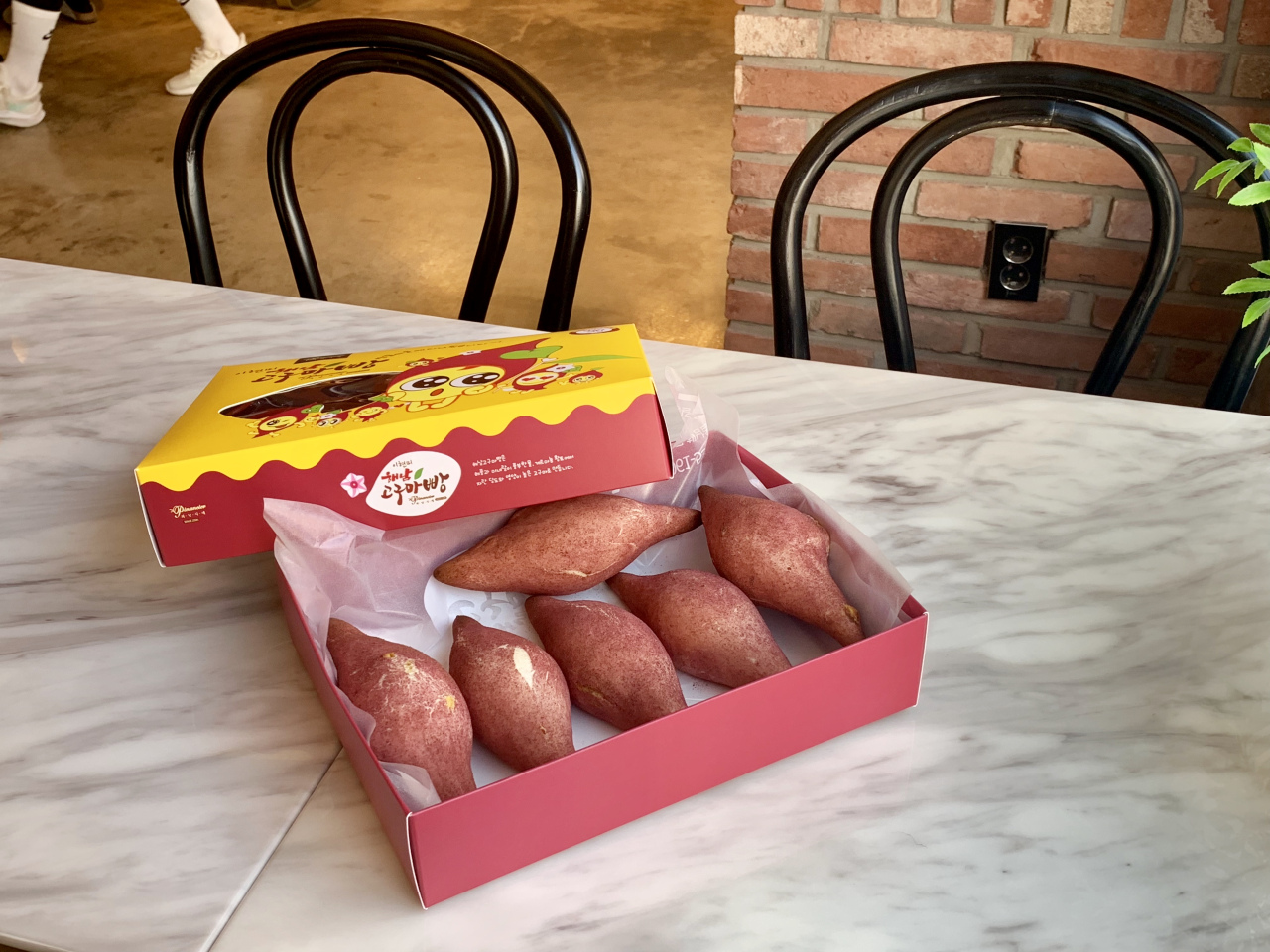
Sweet potato bread (By Im Eun-byel / The Korea Herald)
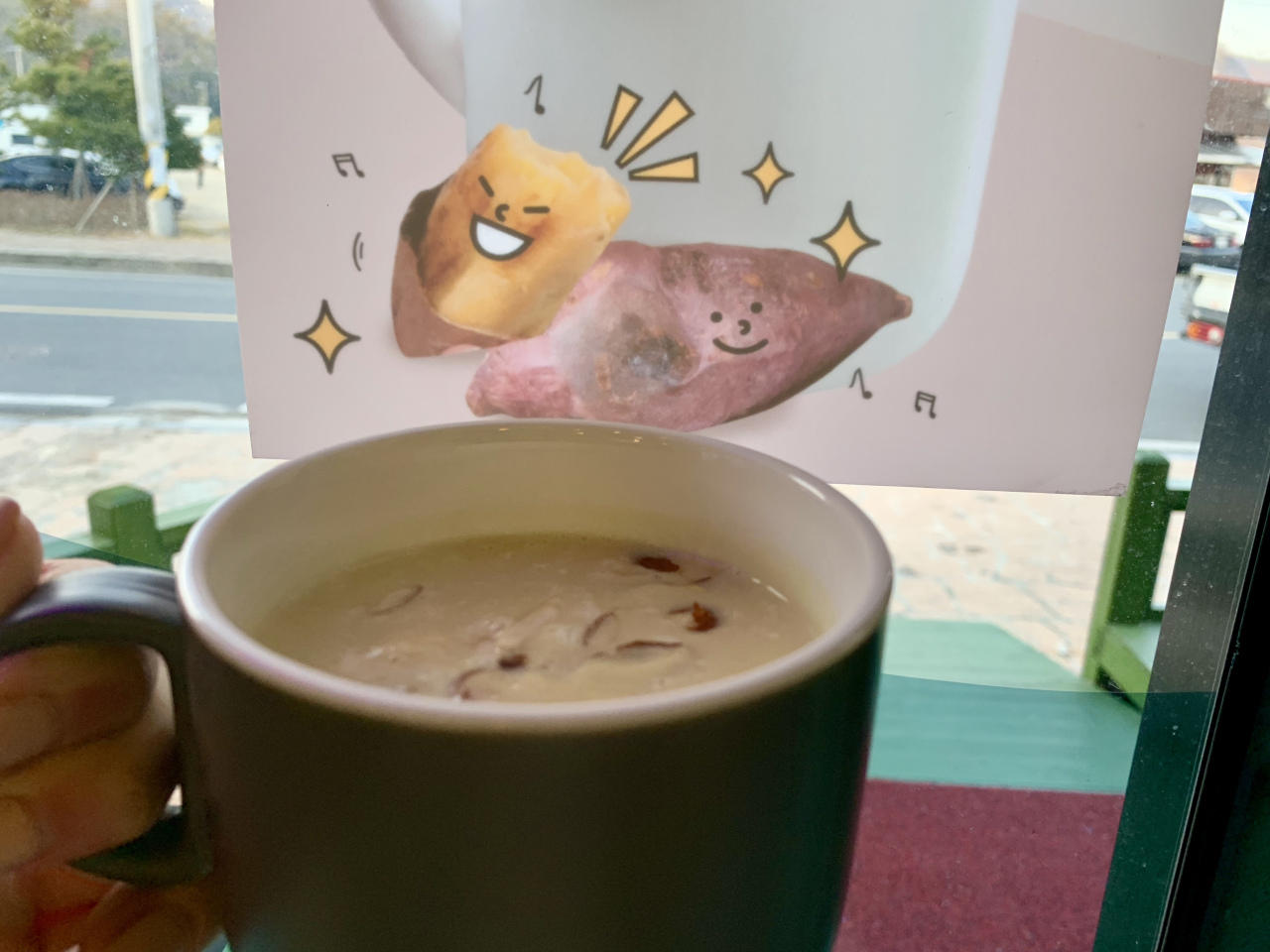
Sweet potato latte (By Im Eun-byel / The Korea Herald)
Haenam is famous for its sweet potatoes. Fields of red-tinted soil, perfect for sweet potato cultivation, are spread out across the county. Most of the farmed land in the area is used for farming sweet potatoes.
People of the region have developed food items made with the root vegetable, from lattes to bread filled with sweet potato paste.
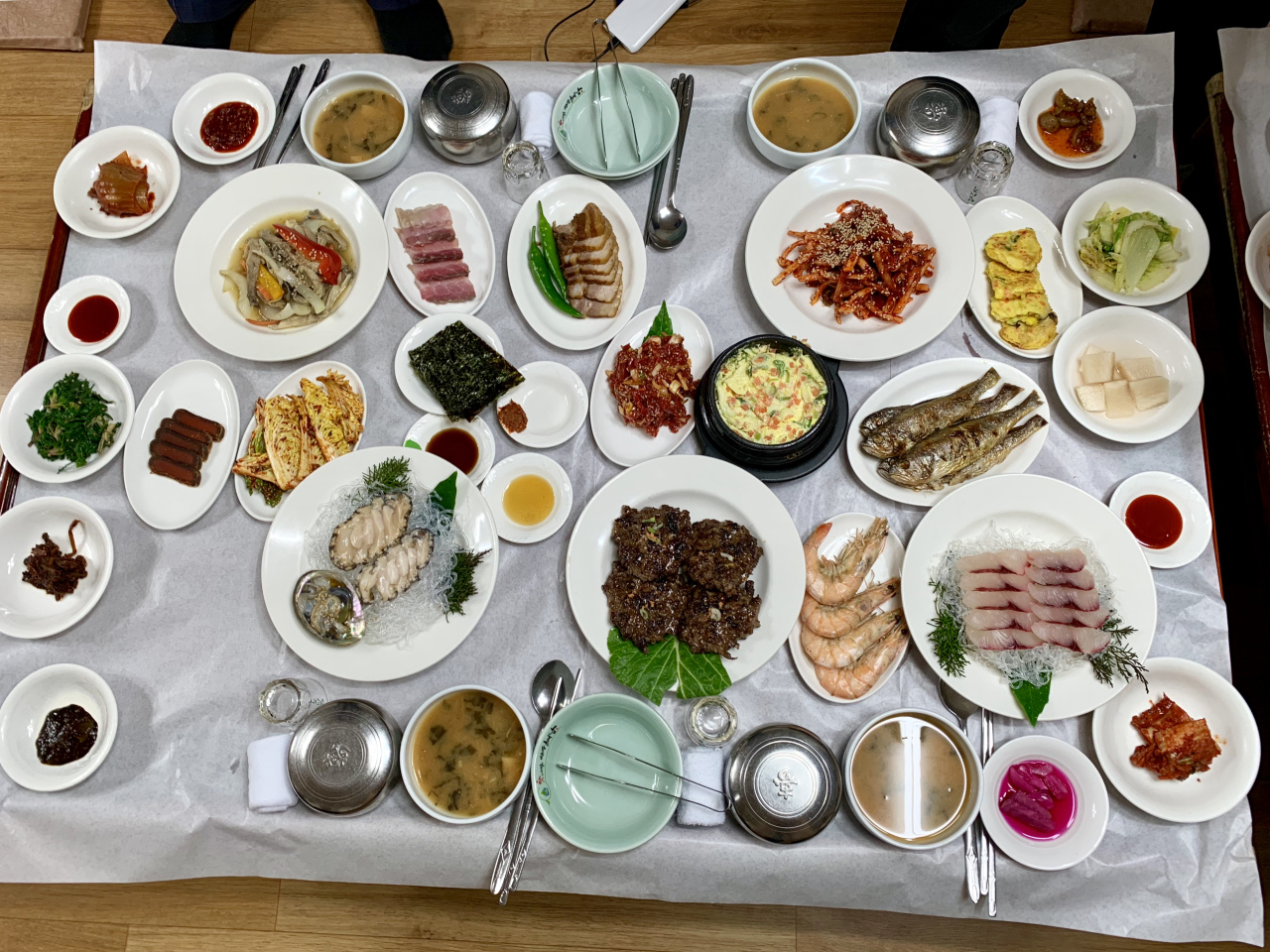
Set table dining (By Im Eun-byel / The Korea Herald)
Another specialty is set table dining, or sangcharim in Korean. Diners may be surprised to find such restaurants empty, without tables. A whole table laid out with delicacies from the land and ocean will be served, including sannakji (live octopus), jeonbokjang (fermented abalone) and hongeo (skate).
(
silverstar@heraldcorp.com)












![[KH Explains] How should Korea adjust its trade defenses against Chinese EVs?](http://res.heraldm.com/phpwas/restmb_idxmake.php?idx=645&simg=/content/image/2024/04/15/20240415050562_0.jpg&u=20240415144419)